BIOLOGY OF THE BRAIN: UNDERSTANDING HOW THE BRAIN WORKS AND ITS POTENTIAL FOR OPTIMIZATION
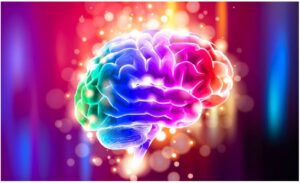
INTRODUCTION
The brain is the most complex organ in the human body. It is responsible for all our thoughts, emotions, and actions. It is made up of different regions that work together to carry out specific functions. The brain can be divided into three main parts: the cerebrum, the cerebellum, and the brainstem.
The cerebrum, which is the largest part of the brain, is responsible for higher cognitive functions such as perception, reasoning, memory, and decision-making. It is divided into two hemispheres, the left and right, and these hemispheres are connected by a bundle of nerve fibres called the corpus callosum. The cerebrum is further divided into lobes, including the frontal, parietal, temporal, and occipital lobes, each with its unique functions.
The cerebellum, located at the back of the brain, plays a crucial role in coordinating movement, balance, and posture. It also contributes to motor learning and fine motor skills, such as hand-eye coordination and precise movements.
The brainstem, often referred to as the oldest and most primitive part of the brain, is responsible for basic functions that are essential for survival, such as breathing, heart rate, and digestion. It also serves as a pathway for nerve signals to and from the rest of the brain, facilitating communication between different brain regions.
The thalamus, located in the centre of the brain, acts as a relay station for sensory information. It receives sensory inputs from various parts of the body and routes them to the appropriate areas of the brain for processing, allowing us to perceive and interpret the world around us.
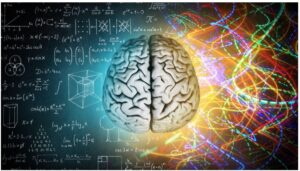
The hypothalamus, a small but crucial region located below the thalamus, plays a pivotal role in regulating various bodily functions, including body temperature, hunger, thirst, and sleep-wake cycles. It also controls the release of hormones from the pituitary gland, which in turn regulates various physiological processes in the body.
The hippocampus, an essential region for memory formation and consolidation play a vital role in learning and spatial navigation. It helps us encode and store new memories, as well as retrieve them when needed.
The amygdala, often associated with emotions, particularly fear, is involved in processing emotional responses to stimuli. It plays a crucial role in our emotional experiences and responses to various situations.
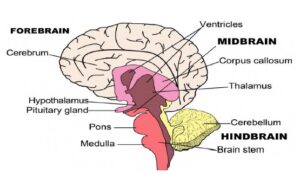
The brain is made up of billions of neurons, which are specialized cells that transmit information through electrical and chemical signals. Neurons communicate with each other through synapses, which are small gaps between neurons. Neurotransmitters are chemicals that transmit signals between neurons. They play a crucial role in regulating mood, appetite, and other bodily functions. Examples of neurotransmitters include dopamine, serotonin, and acetylcholine.
Neurons, also known as nerve cells, are the fundamental building blocks of the nervous system, including the brain. They are specialized cells that are responsible for transmitting and receiving signals, allowing for communication and coordination within the brain and throughout the body.
Structure of Neurons:
Neurons have a unique structure that is optimized for their function of transmitting signals. The main parts of a neuron include:
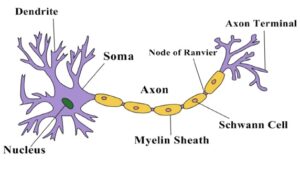
Cell body (soma): The cell body contains the nucleus, which houses the genetic material of the neuron, and other organelles necessary for its survival and function.
Dendrites: Dendrites are branch-like structures that extend from the cell body and are covered with specialized structures called dendritic spines. Dendrites receive incoming signals from other neurons and transmit them towards the cell body.
Axon: The axon is a long, slender projection that extends from the cell body and carries outgoing signals away from the neuron. Axons can be several centimetres to meters in length in some cases.
Axon terminals: At the end of the axon, there are small branches called axon terminals, which contain specialized structures called synaptic terminals or boutons. These terminals form synapses, which are the points of communication between neurons.
Neurotransmitters:
Neurons communicate with each other through specialized chemicals called neurotransmitters. Neurotransmitters are stored in vesicles in the synaptic terminals of the axon and are released into the synapse when an electrical signal, known as an action potential, reaches the axon terminals.
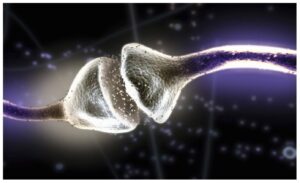
The released neurotransmitters then bind to receptors on the dendrites or cell body of the neighbouring neuron, transmitting the signal across the synapse. This binding of neurotransmitters to receptors can either excite or inhibit the receiving neuron, depending on the type of neurotransmitter and the specific receptors involved.
There are many different types of neurotransmitters, each with its unique properties and functions. Some common neurotransmitters include:
➢ Acetylcholine: Involved in muscle contraction, learning, and memory.
➢ Dopamine: Associated with reward, motivation, and movement.
➢ Serotonin: Regulates mood, appetite, and sleep.
➢ GABA (Gamma-aminobutyric acid): Inhibitory neurotransmitter that helps regulate
neuronal excitability and plays a role in anxiety and relaxation.
➢ Glutamate: Excitatory neurotransmitter that is involved in learning and memory.
Neurotransmitters play a crucial role in the communication and coordination of neuronal activity within the brain, allowing for complex information processing and integration of signals from various regions of the brain. Imbalances or dysfunctions in neurotransmitters have been implicated in various neurological and psychiatric disorders, highlighting their importance in brain function and health.
External factors such as drugs, alcohol, and stress can affect neurotransmitter levels and alter brain function and behaviour. For example, drugs like cocaine and amphetamines can increase the levels of dopamine in the brain, leading to feelings of euphoria and increased energy. Alcohol can depress the central nervous system, leading to impaired judgment, slowed reflexes, and poor coordination. Stress can cause the release of cortisol, a hormone that can damage neurons in the hippocampus and impair memory.
Overall, neurons and neurotransmitters are essential components of the brain’s intricate communication system, enabling the complex functions of the nervous system, including perception, cognition, emotion, and behaviour.
Neural networks are groups of interconnected neurons that work together to carry out specific functions. They are responsible for processes such as learning and memory. These networks allow for the complex processing of sensory input, integration of information from different brain regions, and generation of appropriate motor outputs andbehaviours. Neural networks are responsible for many cognitive functions, including learning, memory, perception, decision-making, and emotion.
Neural networks are formed through a process called synaptic plasticity, which involves the strengthening or weakening of connections between neurons based on their activity. When neurons are repeatedly activated together, the connections between them are strengthened, forming a functional network. This process allows for the formation of complex and specialized networks that are tailored to specific functions.
Different brain regions are interconnected in specific ways to form distinct neural networks. For example, the prefrontal cortex, which is involved in decision-making and cognitive control, is connected to the hippocampus, which plays a crucial role in memory formation. These interconnected networks allow for the integration of information from different brain regions and the coordination of complex cognitive processes.
Learning and memory are two important functions that rely on neural networks. Learning involves the acquisition of new information or skills, while memory is the ability to store and retrieve information from the past. Neural networks play a crucial role in the formation, consolidation, and retrieval of memories. For example, the hippocampus, along with other brain regions, is involved in the formation of new memories, while the prefrontal cortex is important for working memory and long-term memory retrieval.
Brainwaves are patterns of electrical activity in the brain that can be measured using an electroencephalogram (EEG), which records the electrical signals produced by the brain. Different mental states and activities are associated with specific patterns of brainwave activity.
There are several types of brainwaves, categorized based on their frequency, which refers to the number of cycles of electrical activity that occur per second. The main types of brainwaves are:
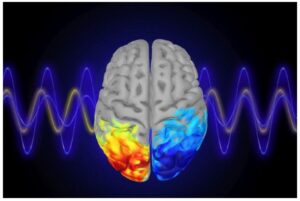
➢ Delta waves (0.5-4 Hz): Delta waves are associated with deep sleep and are typically the slowest brainwaves. They are important for restorative processes in the body, such as tissue growth and immune system function.
➢ Theta waves (4-8 Hz): Theta waves are associated with deep relaxation, daydreaming, and creativity. They are also observed during the early stages of sleep and during REM (rapid eye movement) sleep, which is associated with dreaming.
➢ Alpha waves (8-13 Hz): Alpha waves are associated with a relaxed and calm state of mind. They are often observed when a person is awake but in a relaxed state, such as during meditation or when the eyes are closed.
➢ Beta waves (13-30 Hz): Beta waves are associated with focused mental activity, concentration, and alertness. They are typically observed during wakefulness and active mental tasks.
➢ Gamma waves (30-100 Hz): Gamma waves are the fastest brainwaves and are associated with high-level cognitive processes, such as perception, learning, and memory.
Brainwaves can provide valuable information about the state of the brain and can be used in various clinical and research settings, such as studying sleep disorders, cognitive function, and brain disorders. However, it’s important to note that brainwave patterns are complex and can vary depending on many factors, including the individual, the specific task or activity, and other environmental factors. Further research is ongoing to better understand the relationship between brainwave patterns and cognitive function.
The brain is a highly complex organ that processes vast amounts of information, controls behavior, and constantly adapts to new challenges in the environment. Understanding how the brain processes information, controls behavior, and adapts to new challenges is a fundamental goal of neuroscience, the scientific study of the nervous system, and involves interdisciplinary research spanning multiple fields, including biology, psychology, physics, and computer science.
Information Processing in the Brain:
The brain processes information from the external environment and internal states through its billions of neurons, which are specialized cells that transmit electrical and chemical signals. Neurons receive input from sensory organs, process the information, and generate appropriate outputs in the form of electrical signals that are transmitted to other neurons or muscles to produce behavior.
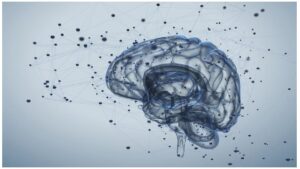
Information processing in the brain involves complex and hierarchical processing, where information is processed in different brain regions in parallel and integrated to generate coherent perceptions, thoughts, and actions. Sensory information, such as visual, auditory, and tactile stimuli, is processed in specialized regions of the brain, such as the visual cortex, auditory cortex, and somatosensory cortex. Higher-order brain regions, such as the prefrontal cortex, integrate information from different sensory modalities, and are involved in higher cognitive processes, such as decision-making, problem-solving, and planning.
The brain also engages in continuous feedback loops, where information is processed in a cyclical manner, with recurrent connections between brain regions facilitating ongoing processing and integration of information. This dynamic and interactive nature of information processing in the brain allows for flexible and adaptive behavior in response to changing environmental conditions.
Behavioral Control by the Brain:
The brain plays a central role in controlling behavior, as it generates motor outputs that drive movements and actions. Motor control involves the coordination of various brain regions, including the motor cortex, basal ganglia, cerebellum, and brainstem, which work together to plan, initiate, and coordinate movements.
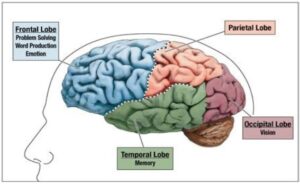
Motor control in the brain involves the generation of motor commands that are transmitted through descending pathways to the spinal cord, which then sends signals to muscles to produce movements. These motor commands are generated based on sensory information from the environment, internal states, and cognitive processes, such as decision-making and intention.
Behavioral control by the brain also involves higher-level cognitive processes, such as motivation, emotion, and reward, which influence the generation and execution of behavior. For example, the brain’s reward system, which involves regions such as the ventral tegmental area and nucleus accumbens, plays a crucial role in motivating behavior and reinforcing certain actions or decisions.
Adaptation to New Challenges:
The brain is highly adaptable and has the ability to change and reorganize its structure and function in response to new challenges and experiences. This phenomenon is known as neuroplasticity and is fundamental to learning, memory, and recovery from brain injury.
Neuroplasticity can occur at different levels, including cellular, synaptic, and network levels. At the cellular level, neurons can change their structural and functional properties in response to changes in their activity patterns or input. This can result in the strengthening or weakening of synaptic connections between neurons, which underlies learning and memory processes.
At the synaptic level, synapses, which are specialized connections between neurons, can undergo changes in their strength and structure in response to activity patterns. This can result in synaptic plasticity, which is a fundamental mechanism underlying learning and memory.
At the network level, the connections and interactions between different brain regions can change in response to new challenges or experiences. This can result in the reorganization of neural networks and the development of new functional connections between brain regions.
Neuroplasticity is not limited to the developmental period but occurs throughout life in response to learning, environmental changes, and brain injury. This adaptive capability of the brain allows for the acquisition of new skills. Neuroplasticity also plays a role in recovery from brain injury or stroke. The brain can reorganize itself to compensate for the damage caused by injury, allowing individuals to regain lost functions to some extent. The brain is a complex organ that controls behaviour through a network of neurons and neural networks, and different areas of the brain are responsible for different behaviors and emotions. Understanding the relationship between brain function and behavior is a central focus of neuroscience research.
Memory:
The brain uses different types of memory to store and retrieve information. Short-term memory is used to hold information temporarily, such as a phone number. This type of memory is limited in capacity and lasts only for a few seconds to a minute.
Long-term memory, on the other hand, is used to store information for a longer period, such as personal experiences and facts. Long-term memory is divided into two types: declarative and non-declarative memory. Declarative memory is used to store factual information such as names, dates, and events. Non-declarative memory, on the other hand, is used to store skills and habits such as riding a bike or playing an instrument.

Prefrontal Cortex:
The prefrontal cortex, located in the frontal lobe of the brain, is involved in higher cognitive functions that are critical for decision-making, planning, and impulse control. It allows us to engage in complex reasoning, problem-solving, and goal-directed behavior. The prefrontal cortex receives input from various sensory and cognitive sources, integrates this information, and generates appropriate responses and actions. It is responsible for executive functions, such as working memory, cognitive flexibility, and inhibitory control, which are essential for adaptive behavior in complex and changing environments.
Limbic System:
The limbic system, located in the central part of the brain, is involved in emotions, motivation, and memory. It includes several interconnected brain regions, such as the amygdala, hippocampus, and hypothalamus. The amygdala plays a key role in processing emotions, particularly fear and anxiety, and is involved in the formation of emotional memories. The hippocampus is crucial for the formation and retrieval of explicit memories, such as episodic memories of events and facts. The hypothalamus is involved in regulating physiological functions, such as hunger, thirst, body temperature, and stress responses. Together, the limbic system plays a critical role in shaping our emotions, motivation, and memory processes, which in turn influence our behaviors and actions.
External Factors:
External factors such as drugs, alcohol, and stress can significantly impact brain function and behavior. Drugs and alcohol can alter neurotransmitter levels in the brain, which are chemicals that transmit signals between neurons. For example, drugs that affect the dopamine system, such as stimulants or addictive substances, can lead to changes in reward processing and motivation, resulting in altered behavior. Alcohol can affect various neurotransmitters, including gamma-aminobutyric acid (GABA), glutamate, and dopamine, leading to changes in mood, cognition, and behavior.
Stress, both acute and chronic, can also have profound effects on brain function and behavior. Stress activates the hypothalamic-pituitary-adrenal (HPA) axis, leading to the release of stress hormones, such as cortisol, which can impact brain function, including impairments in memory, cognitive flexibility, and emotional regulation. Chronic stress can also result in structural changes in the brain, particularly in areas such as the hippocampus, leading to long-term alterations in brain function and behavior.
In summary, the brain controls behavior through a complex interplay of neural networks and different regions of the brain, including the prefrontal cortex and limbic system. External factors such as drugs, alcohol, and stress can also significantly impact brain function and behavior, highlighting the intricate relationship between brain function and behavior.
Enhancing brain function is a topic of great interest in neuroscience, and several strategies have been explored to optimize brain health and cognitive performance. Here are some of the commonly studied strategies for enhancing brain function:
Neurofeedback:
Neurofeedback is a technique that uses real-time feedback to train the brain to regulate its own activity. It typically involves measuring brain activity using electroencephalography (EEG) or other brain imaging techniques and providing feedback to individuals about their brain activity in real-time. Through this feedback, individuals can learn to modulate their brain activity and optimize brain function. Neurofeedback has been studied for a variety of conditions, including attention deficit hyperactivity disorder (ADHD), anxiety, depression, and cognitive impairments. It has shown promise as a non-invasive and drug-free approach to enhancing brain function in some cases.
Brain Stimulation:
Brain stimulation involves the use of electrical or magnetic fields to modulate the activity of specific brain areas. Transcranial magnetic stimulation (TMS) and transcranial direct current stimulation (tDCS) are two examples of brain stimulation techniques that have been studied for their potential to enhance brain function. TMS uses magnetic fields to stimulate specific regions of the brain, while tDCS applies a weak electrical current to the scalp to modulate brain activity. These techniques have been investigated for various conditions, including depression, chronic pain, stroke, and cognitive enhancement. While the results are promising in some cases, further research is needed to determine their effectiveness and safety.
Brain-Boosting Supplements:
Certain supplements have been studied for their potential to improve brain function. For example, omega-3 fatty acids, commonly found in fatty fish and flaxseed, have been associated with better cognitive function and brain health. Ginkgo biloba, an herbal supplement, has also been studied for its potential cognitive-enhancing effects. However, it’s important to note that the evidence for the effectiveness of brain-boosting supplements is mixed, and more research is needed to establish their benefits and safety.
Lifestyle Factors:
Engaging in healthy lifestyle habits can also contribute to enhanced brain function. Regular exercise has been associated with better cognitive performance and brain health. Exercise promotes neuroplasticity, which is the brain’s ability to adapt and change throughout life. Getting enough sleep is also crucial for brain function, as sleep is essential for memory consolidation and cognitive processes. Additionally, maintaining a healthy diet that is rich in nutrients, antioxidants, and healthy fats can support brain health and cognitive function.
DIFFERENT WAYS IN WHICH BIOHACKERS ARE HACKING THEIR BRAIN
Biohacking is the process of using science, technology, and experimentation to optimize and enhance human performance, including brain function. Biohackers use various methods to hack the brain, including the following:
Nootropics: Nootropics, also known as “smart drugs,” are supplements or drugs that enhance cognitive function. These supplements can improve memory, focus, and mental clarity. However, some of these supplements may have side effects, and their long-term effects are not well understood.
Transcranial Direct Current Stimulation (tDCS): tDCS involves applying a low electrical current to the brain using electrodes placed on the scalp. This technique is thought to enhance cognitive function and treat depression and other neurological disorders. However, its long-term effects and safety are still under investigation.
Meditation: Meditation is a technique that involves training the brain to focus and quiet the mind. It has been shown to reduce stress, improve emotional regulation, and enhance cognitive function. However, it can be difficult to master and requires consistent practice.
Biofeedback: Biofeedback involves using technology to monitor physiological processes such as heart rate, breathing, and brain activity. The feedback can be used to train the brain to regulate these processes, leading to improved mental and physical health.
Exercise: Exercise has been shown to improve brain function by increasing blood flow to the brain and promoting the growth of new neurons. It can also reduce stress and improve mood. However, the type and intensity of exercise required for optimal brain function are still being studied.
Benefits of brain hacking techniques include enhanced cognitive function, improved mood, and better overall health. However, some techniques may have side effects, and their long-term effects are not well understood. It is important to approach brain hacking with caution and to consult with a healthcare professional before trying any new techniques.
As technology continues to advance, there are many exciting and futuristic biohacking tools and methods being developed. Here are some examples:
Implanted devices: There are already devices that can be implanted in the brain to help with conditions such as epilepsy and Parkinson’s disease. In the future, we may see more advanced devices that can enhance cognitive function, memory, and even mood.
Gene editing: CRISPR-Cas9 technology allows for precise gene editing, which could be used to treat genetic diseases and enhance certain traits. However, there are ethical concerns about the potential misuse of this technology.
Virtual and augmented reality: These technologies can be used to simulate experiences and provide immersive training environments. They may also be used for therapeutic purposes, such as treating phobias and PTSD.
Wearable technology: Wearable devices such as smartwatches and fitness trackers can monitor vital signs and provide feedback on health and fitness goals. In the future, we may see more advanced devices that can monitor brain activity and provide real-time feedback.
Artificial intelligence: AI can be used to analyze large amounts of data and provide personalized recommendations for improving health and cognitive function. It may also be used to develop personalized treatment plans for neurological disorders.
While these technologies hold a lot of promise, there are also potential risks and ethical concerns associated with them. It is important to carefully consider the potential benefits and disadvantages of each tool or method before using them for biohacking purposes.
As our understanding of the brain continues to advance, new strategies and technologies are emerging that have the potential to revolutionize our ability to enhance brain function and treat neurological conditions. Here are some promising areas of research that may shape the future directions of brain research:
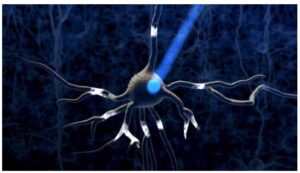
Optogenetics:
Optogenetics is a cutting-edge technique that combines genetics and optics to enable control of neural activity using light. This technique involves introducing light-sensitive proteins called opsins into specific neurons in the brain. These opsins can then be activated or inhibited by light, allowing researchers to precisely control the activity of neurons in real-time. Optogenetics has been used to study neural circuits and behaviors in animal models, and it holds promise for potential therapeutic applications in humans. For example, it could be used to develop new treatments for neurological conditions such as Parkinson’s disease and epilepsy, by selectively modulating the activity of affected neurons in the brain.
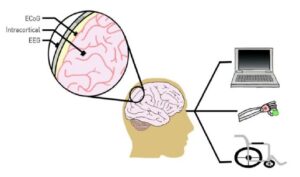
Brain-Computer Interfaces (BCIs):
Brain-computer interfaces (BCIs) are devices that allow direct communication between the brain and a computer. BCIs can enable individuals to control external devices, such as prosthetic limbs or computer cursors, using their brain activity. BCIs can also be used to record and interpret neural activity for various applications, such as restoring movement to individuals with paralysis or improving cognitive function. BCIs can use different techniques to measure brain activity, including invasive methods such as implantable electrodes, and non-invasive methods such as electroencephalography (EEG) and functional magnetic resonance imaging (fMRI). BCIs have the potential to greatly enhance the quality of life for individuals with neurological conditions and have exciting possibilities for future developments.
Artificial Intelligence and Machine Learning:
Advancements in artificial intelligence (AI) and machine learning have the potential to greatly impact brain research. AI algorithms can analyze and interpret large datasets generated by brain imaging techniques, such as functional MRI and EEG, to uncover patterns and relationships in brain activity that may not be apparent to human researchers. Machine learning algorithms can also be used to develop predictive models for brain function and behavior, leading to a deeper understanding of how the brain processes information and controls behavior. Furthermore, AI can assist in optimizing brain stimulation techniques, neurofeedback protocols, and other interventions to enhance brain function and treat neurological conditions.
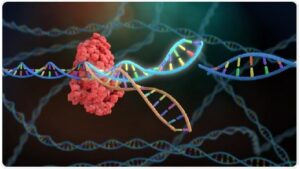
Neuropharmacology and Gene Therapy:
Advancements in neuropharmacology and gene therapy hold potential for the development of novel treatments for neurological conditions. New drugs and gene therapies can be designed to specifically target and modulate the activity of neurons, neurotransmitters, and other molecular targets in the brain. Gene editing technologies such as CRISPR-Cas9 have the potential to correct genetic mutations that cause neurological disorders, opening up possibilities for precision medicine approaches. Additionally, advances in drug delivery techniques, such as nanoparticles and gene editing tools, could enable targeted delivery of therapeutic agents to specific areas of the brain, minimizing side effects and maximizing therapeutic efficacy.
Brain Network Mapping:
Mapping the connectivity and functional networks of the brain is a rapidly evolving field of research. Advanced neuroimaging techniques, such as diffusion tensor imaging (DTI) and resting-state functional MRI (rs-fMRI), can provide detailed information about the connections between different brain regions and their functional interactions. These advances in brain network mapping can shed light on how the brain processes information, how different brain regions communicate with each other, and how these networks are disrupted in neurological conditions. Such knowledge can lead to the development of targeted interventions to optimize brain function and treat neurological disorders.
In conclusion, the study of the brain’s biology is a captivating and intricate field that continues to unveil the mysteries of its workings and optimization potential. The brain is comprised of specialized regions with distinct functions, and billions of neurons that communicate through neurotransmitters, enabling complex information processing and integration. Understanding the structure and function of neurons, as well as the role of neurotransmitters, provides valuable insights into how the brain processes information, regulates emotions, controls bodily functions, and forms memories. Furthermore, rapid advancements in brain research, such as optogenetics, brain-computer interfaces, artificial intelligence, and machine learning, hold promising prospects for enhancing brain function and treating neurological conditions in the future. These groundbreaking discoveries are propelling the field forward and opening new horizons for understanding and optimizing the brain.
Furthermore, the brain is a dynamic organ that can be influenced by external factors such as drugs, alcohol, stress, and other environmental factors. Imbalances or dysfunctions in neurotransmitters have been implicated in various neurological and psychiatric disorders, underscoring the critical role of neurotransmitters in brain function and health.
Advancements in our understanding of the biology of the brain have the potential for optimizing brain function and improving brain health. Research in areas such as neuroplasticity, neuropharmacology, and neurotechnology is paving the way for new interventions and therapies that can enhance cognitive function, treat neurological disorders, and improve overall brain health.
As our understanding of the brain continues to advance, there is great potential for harnessing this knowledge to optimize brain function and unlock the full capabilities of the human brain. By understanding the intricacies of how the brain works at the cellular and molecular level, we can develop interventions and strategies to enhance brain function, improve mental health, and ultimately improve the quality of life for individuals. The study of the biology of the brain holds immense promise for the future of neuroscience and has the potential to revolutionize our understanding of the human brain and its optimization.
 Dr K. Jayanth Murali is a retired IPS officer and a Life Coach. He is the author of four books, including the best-selling 42 Mondays. He is passionate about painting, farming, and long-distance running. He has run several marathons and has two entries in the Asian book of Records in full and half marathon categories. He lives with his family in Chennai, India. When he is not running, he is either writing or chilling with a book.
Dr K. Jayanth Murali is a retired IPS officer and a Life Coach. He is the author of four books, including the best-selling 42 Mondays. He is passionate about painting, farming, and long-distance running. He has run several marathons and has two entries in the Asian book of Records in full and half marathon categories. He lives with his family in Chennai, India. When he is not running, he is either writing or chilling with a book.
